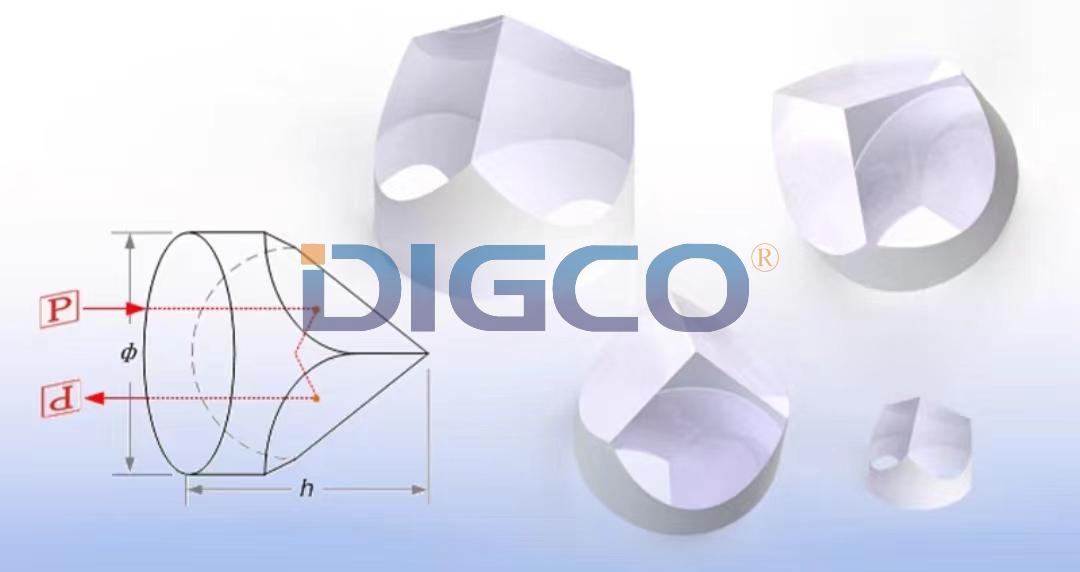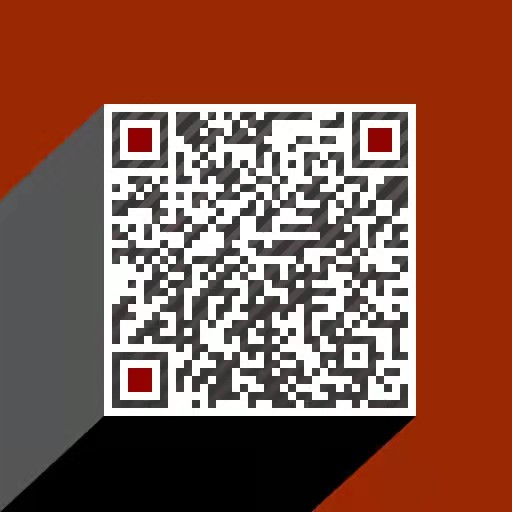A corner reflector is a retroreflector consisting of three mutually perpendicular, intersecting flat surfaces, which reflects waves directly towards the source, but translated.
The three intersecting surfaces often have square shapes. Radar corner reflectors made of metal are used to reflect radio waves from radar sets.
Optical corner reflectors, called corner cubes or cube corners, made of three-sided glass prisms, are used in surveying and laser ranging.
Corner cube prisms are prisms which act as corner reflectors, a type of retroreflectors. The basic operation principle is that there are internal reflections on three mutually orthogonal prism surfaces,
leading to a direction of a reflected beam which is nominally parallel to the direction of the incident beam – with the accuracy limited only by the accuracy of the surface orientation of the prism.
Precision prisms can offer excellent parallelism of incoming and reflecting beams. It is usually specified as an angular deviation, e.g. < 3 arcseconds.

The operation principle is illustrated as above. The incoming ray is reflected three times, once by each surface, which results in a reversal of direction.
To see this, the three corresponding normal vectors of the corner's perpendicular sides can be considered to form a basis (a rectangular coordinate system) (x, y, z)
in which to represent the direction of an arbitrary incoming ray, [a, b, c]. When the ray reflects from the first side, say x, the ray's x component, a,
is reversed to −a while the y and z components are unchanged, resulting in a direction of [−a, b, c]. Similarly, when reflected from side y and finally from side z,
the b and c components are reversed. Therefore, the ray direction goes from [a, b, c] to [−a, b, c] to [−a, −b, c] to [−a, −b, −c],
and it leaves the corner reflector with all three components of direction exactly reversed. The distance travelled, relative to a plane normal to the direction of the rays,
is also equal for any ray entering the reflector, regardless of the location where it first reflects
Of course, the retroreflection works properly with a laser beam only when it fully hits one of the reflecting surfaces; it should not be directed into the corner.
Despite the name containing the term “cube”, corner cube prisms are generally not having the geometric form of a cube. Instead, the input/output side is oriented roughly perpendicular to the direction of incoming beams,
and opposite to it there is the “corner” formed by three mutually perpendicular surfaces. The exact orientation of the input/output surface is not critical, but it is easier to have an effective anti-reflection coating when the incidence is roughly perpendicular.
Usually, the input/output surface is equipped with a broadband AR coating. Imperfect operation of the coating leads to a parasitic reflected beam.
Corner cube prisms may be supplied as bare prisms, or together with holds for mounting e.g. to a surface. The property of reflecting an incoming beam of light back toward its source makes corner cube prisms highly valuable in various applications, including:Spectroscopy: Corner cube prisms are used to precisely redirect light in spectrometers, making them essential for the analysis of light spectra in fields like astronomy and chemistry.
Satellites: Retroreflectors are often placed on satellites and other space objects for laser ranging, allowing precise measurements of distances between these objects and Earth.
Battlefield Technology: They are utilized in military applications for precise targeting and ranging.
Land Surveying: Surveying instruments, such as total stations, use corner cube prisms to accurately measure distances and angles.
Laser Resonator Cavities: Corner cube prisms help maintain the alignment of laser beams within resonator cavities in laser systems.
Electronic Distance Measurement: They play a crucial role in distance measurement devices used in construction and surveying.
Space Vessel Docking: Corner cube retroreflectors are utilized for precise docking and rendezvous of space vessels and vehicles.
For customerization,following specification will be required for production drawing:
Beam Deviation (arcsec):3
Coating:
Diameter (mm):
Substrate:
N-BK7/H-K9L/Si
Height (mm):
Surface Quality:
Type:
Retroreflector
Bevel:
Clear Aperture (%):
Height Tolerance (mm):
Image Orientation:
Left-Handed
Ray Deviation (°):180
Wavelength Range (nm):
Surface Flatness (P-V):
Contact: John Jay Woo
Phone: +86-13982280204
E-mail: digco(at)digco-techs(dot)com
Whatsapp:+86-13982280204
Add: No.2339,South Secrion of Tianfu Avenue,Tianfu New Area,Chengdu 610213,China
We chat
